- The Naturalist
- Posts
- Mullein
Mullein
Verbascum thapsus
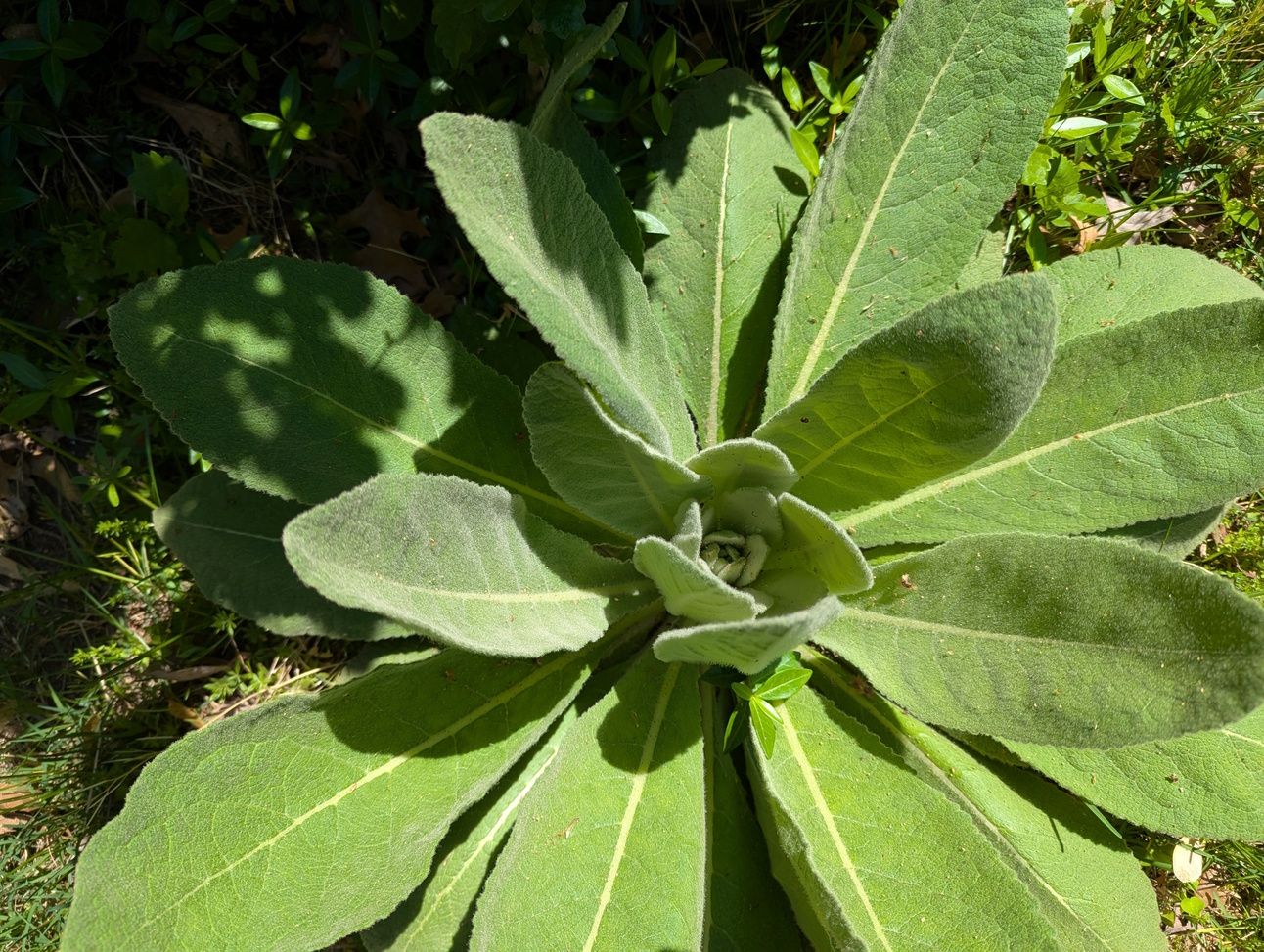
Mullein rosette
I really should’ve covered this years ago at this point, but today we’ll go over my wife’s favorite medicinal herb!
This is a very beginner-friendly medicinal, and it has some pretty crazy benefits.
Let’s get into it:
Plant Profile:
Scientific Name: Verbascum thapsus
Preferred Habitat: Recently disturbed soil (within the past several years) roadsides, railroad tracks, in open pastures, and in rocky or poor soils.
Edible Parts: Leaves, flowers, roots (not as commonly consumed)
Distribution: Most of the US and parts of Southern Canada
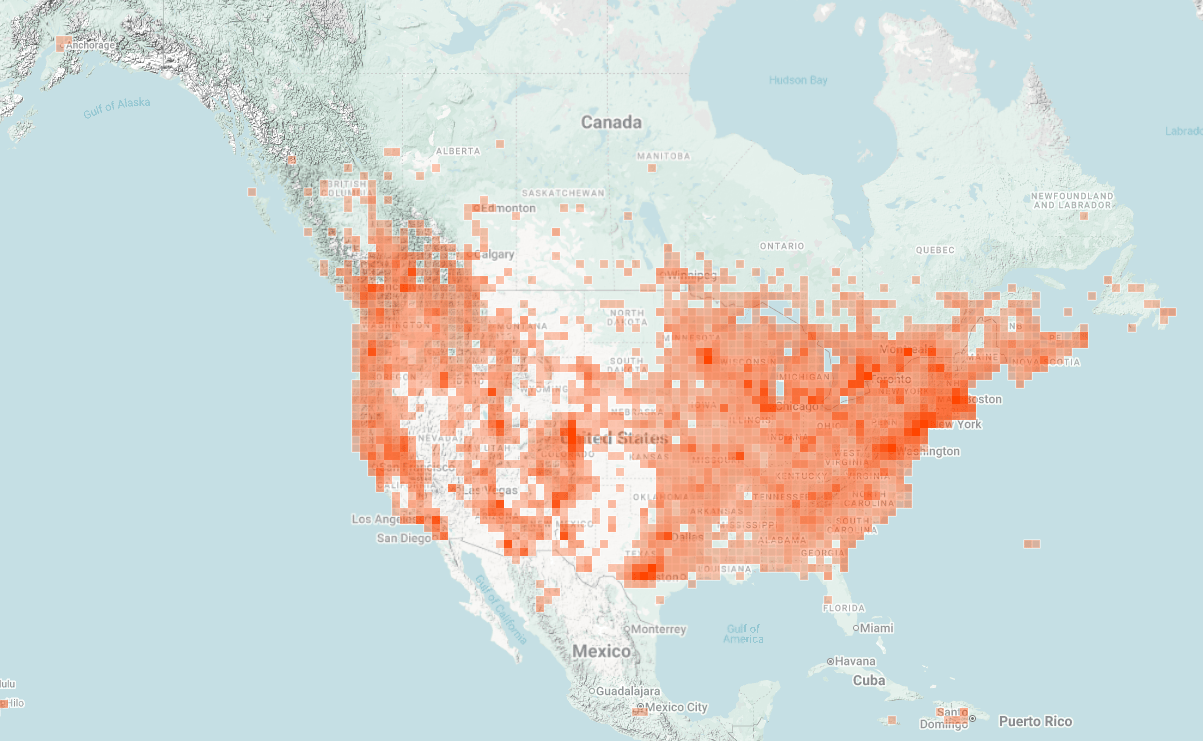
Harvest Season: Late spring through fall
Key Identifiers: Large basal rosettes of distinctly fuzzy leaves, plants 2 years old or older will have a large flower stalk (often called the “spike”) with yellow flowers and light green buds.
Toxic Look-Alikes: Mullein is quite easy to identify. There are only two plants that you may run into that bare a slight resemblance: comfrey (another medicinal plant) and lamb’s ear.
Lamb’s ear grows in clumps and doesn’t have a flower spike, the leaves tend to be smaller. These you’re far more likely to find in the garden and not in the wild.
Comfrey can look similar, but it doesn’t have a large flower spike and the leaves are more rough than soft like mullein. The flowers also look different and tend to be pink or purple.
Medicinal Benefits:
Respiratory ailment aid
Root tinctures help with back pain
Helps with pulmonary disease
Mullein flower oil treats skin conditions (warts, frostbite, sores, eczema, sunburn, boils, rashes and earaches)
Flowers in some preparations (which I can’t find specifics on) have been used to treat flu, colds, and croup coughing
Eases gastrointestinal distress
Extract can fight parasites fairly effectively
Treats lung infections
Treats pneumonia
Fights staph infection
Fights e coli
Helps heal swollen glands
Antispasmodic properties
Anti-inflamatory properties
Decongestant
Expectorant properties
There’s a reason this is my wife’s favorite herb!

My 3 year old next to a mullein plant
Uses
Mullein is pretty much exclusively a medicinal plant (although we tend to blur the lines between edible and medicinal at The Naturalist).
As you just read it has a TON of benefits that is worth using it for!
While you can make oils, tinctures, salves, and extracts with it, you can also just make a simple tea from the leaves! This is our favorite way to prepare it.
Throughout history it was commonly used as a smoking herb specifically for the expectorant qualities and to treat pulmonary disease. Today it is also smoked by people trying to quit tobacco.
This may sound counter-intuitive, but there’s some evidence to suggest that it can act as a good expectorant this way vs taking it as a tea or tincture, and it is a VERY gentle and mild herb to smoke so there’s not really any risk to trying this.
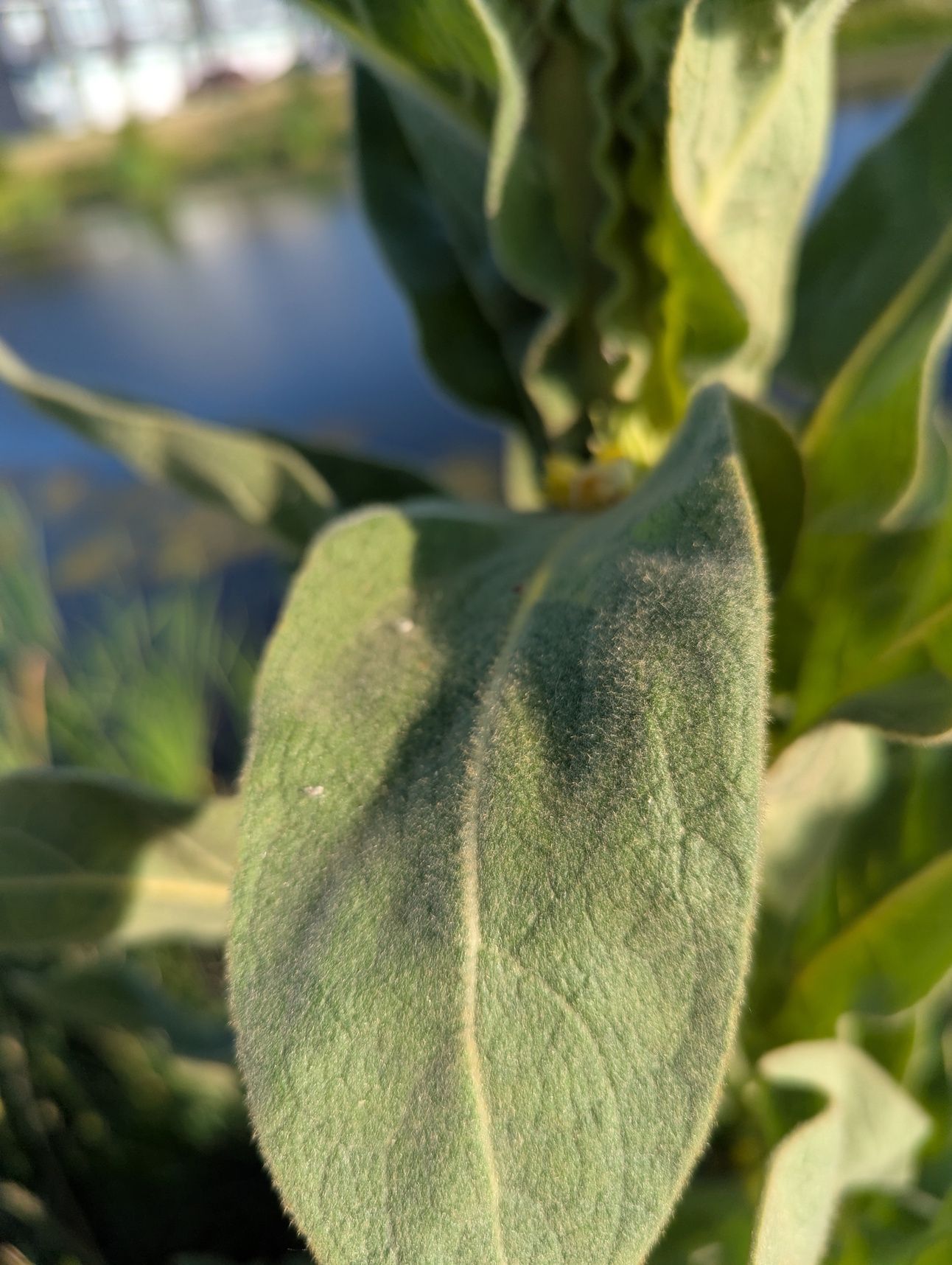
Mullein leaf up close
Growth Habits
Mullein is a biennial plant which means it matures fully in its second year of life.
In the first year, it grows as a rosette of fuzzy leaves which die back for the winter. In the following spring, it regrows and sends up a flower stalk covered in buds! (Sometimes multiple!)
Mullein tends to grow a lot near parking lots, construction sites, or near busy roads, so I would be careful of where you harvest from (See these articles for where to avoid: Become a Forager and Forager Code)
Mullein seeds can be cultivated, but they must be exposed to sunlight to germinate.
The best time to find mullein is in late spring and summer when the leaves first pop up, and when the flower spikes will be visible. As long as it’s available, you can pick it! I don’t aim for a specific stage or time of year, I just harvest leaves as they grow and dry them for tea!
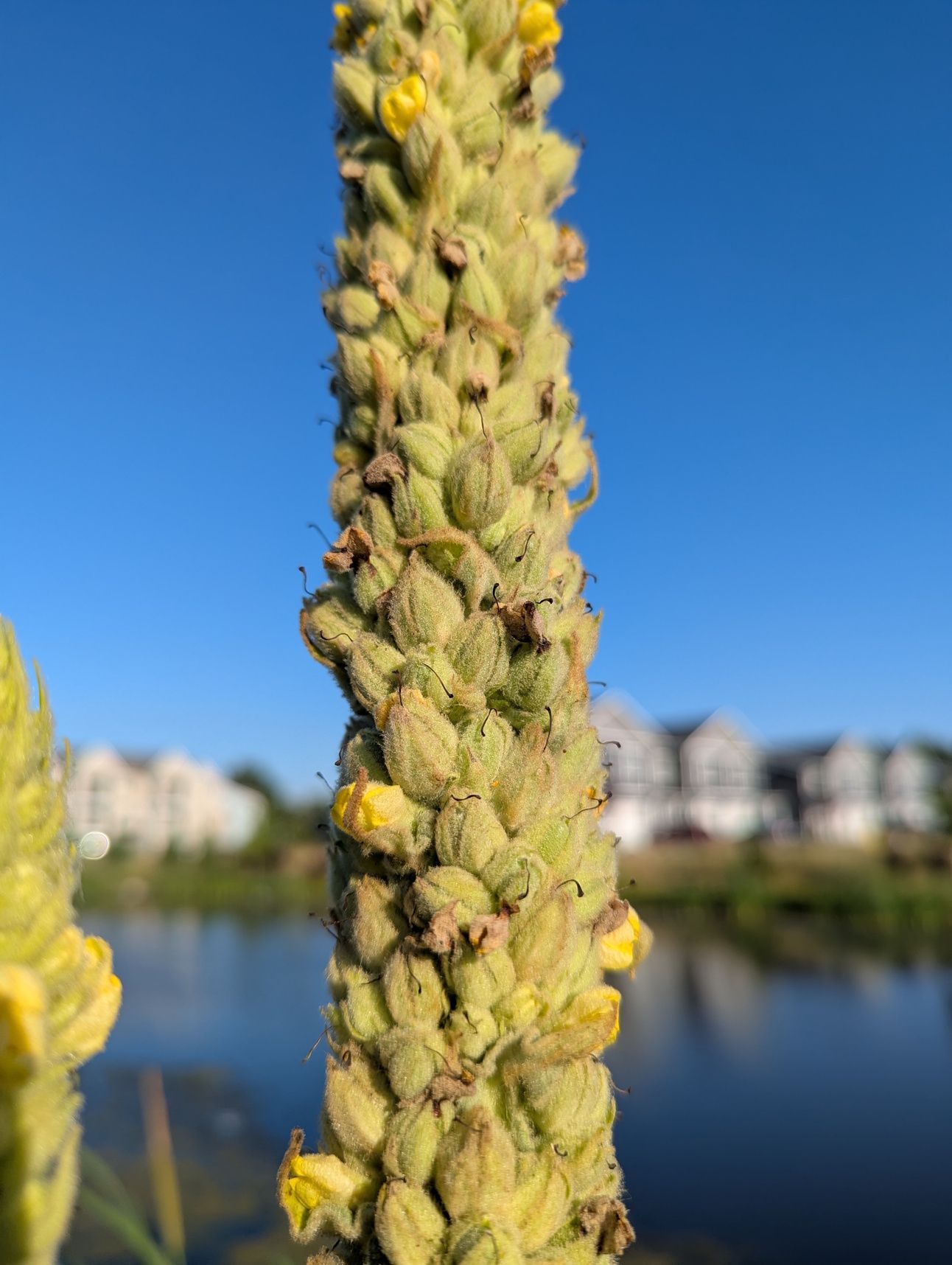
Mullein flower buds
Additional Information
Mullein is an old world plant from Europe, Asia, and Africa, but is now found on most continents.
Because of this you’ll find many more species of mullein overseas (especially in the Mediterranean region) than you will here in the US.
Another pretty important note, don’t eat the seeds!
While they won’t kill you or even poison you the traditional way (puking, diarrhea, etc) they can ironically cause major breathing problems.
A couple seeds accidentally eaten won’t do anything to you as you’d need a lot of them to do any serious damage, but just don’t go trying to make them into medicines or anything.
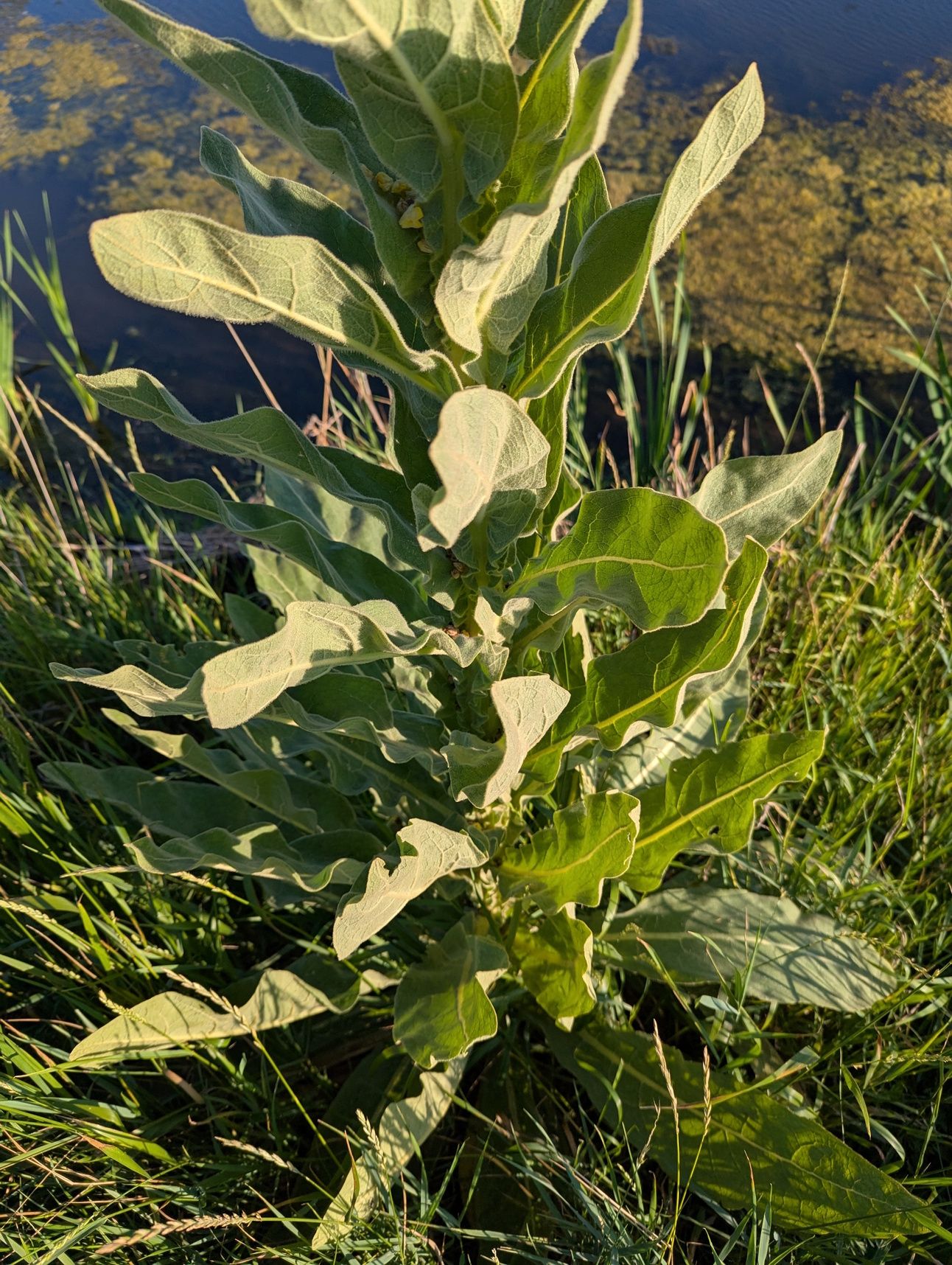
Base of the mullein plant
Cultivars
These mullein varieties are technically different species, but for all intents and purposes can be considered effectively the same plant as V. thapsus (also known as “Greater Mullein”)
Dense-flower (Common) Mullein - This is V. densiflorum which you may encounter in the wild in some places, but is much rarer than Greater Mullein. This one has larger dense golden yellow blooms that are very pretty.
Southern Charm - This is actually a mix of a few species and blooms in some pretty pastel colors including cream, pale yellow, pink, and peach.
Antique Rose - This is V. phoeniceum (or purple mullein) this particular cultivar blooms pink, and earlier than the other species.
Violetta - Also V. phoeniceum, this variety blooms a sharp violet color.
White Bride - Another V. phoeniceum, this is a pretty white-blooming variety.
* V. phoeniceum tends to have smoother leaves than what you’d find in the wild, and it typically blooms earlier.
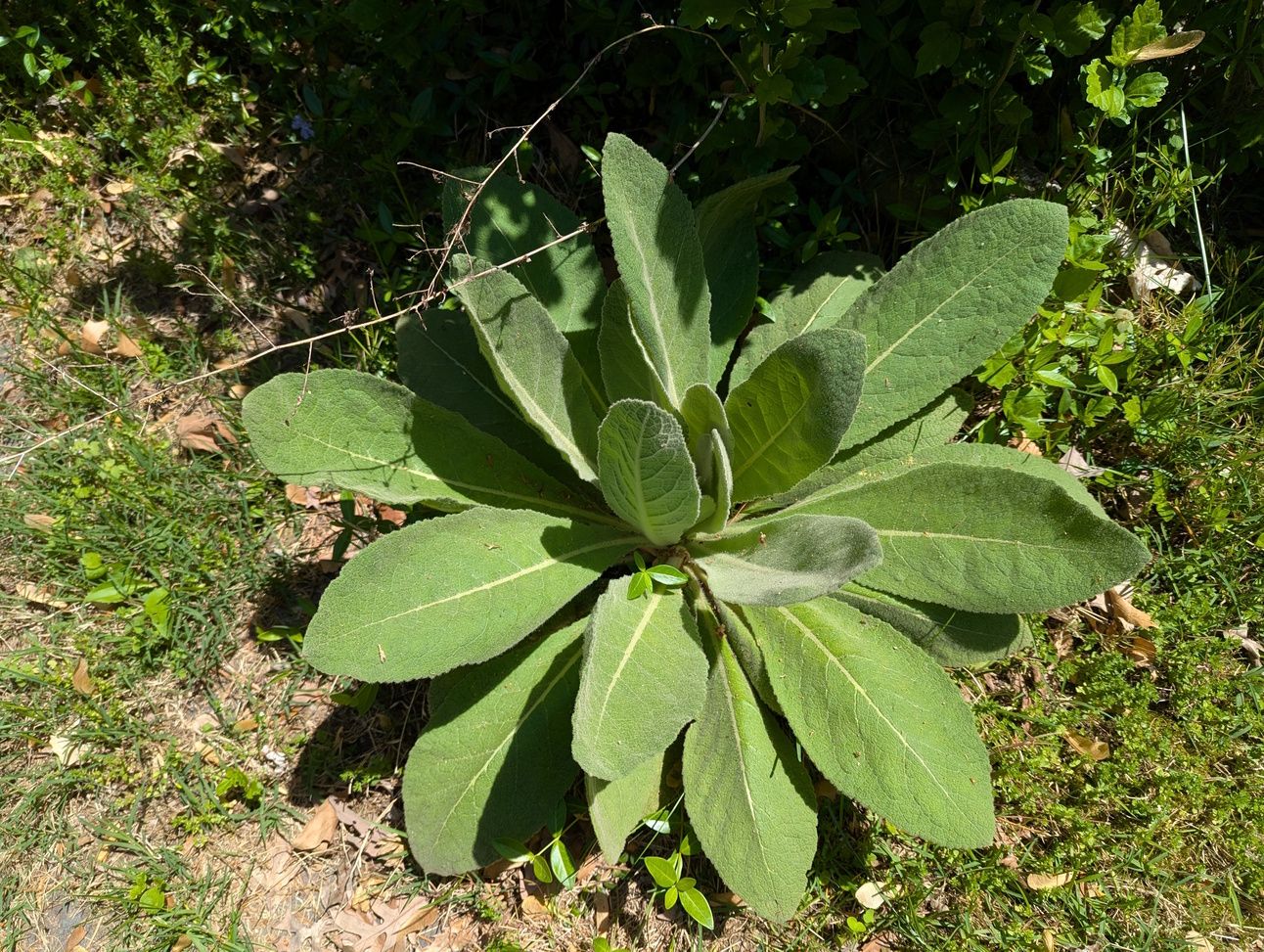
First year rosette
Follow me on social media for behind-the-scenes videos and seasonal photos!
Leave a comment to show the algorithm how legit we are!
Thanks for reading The Naturalist. Please share on social media to support the work!
Reply